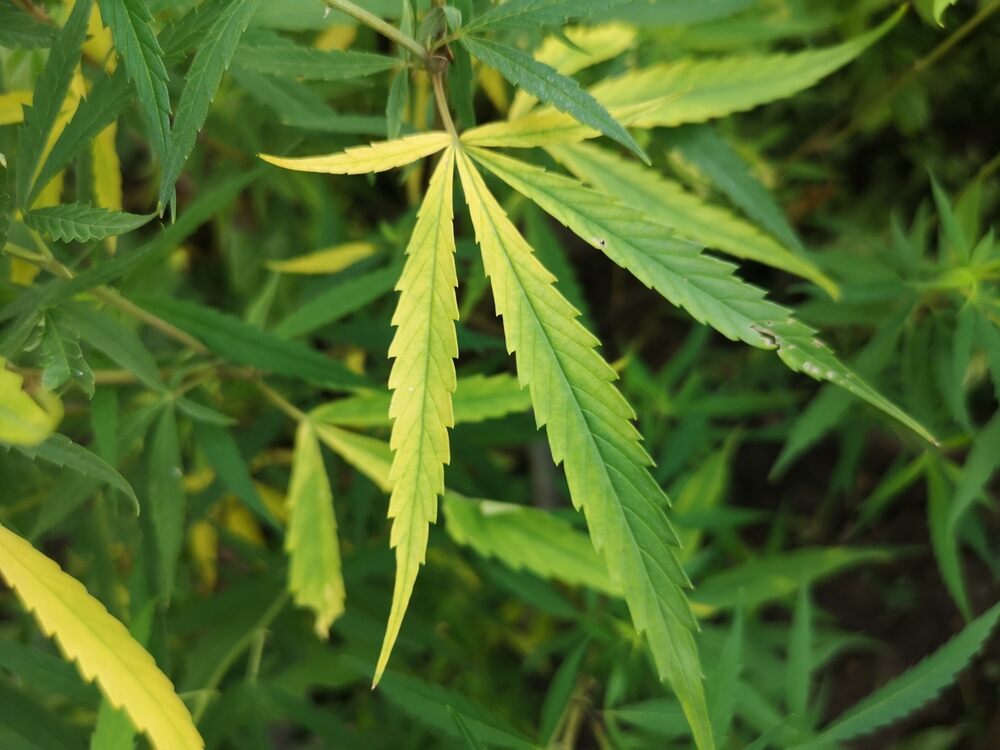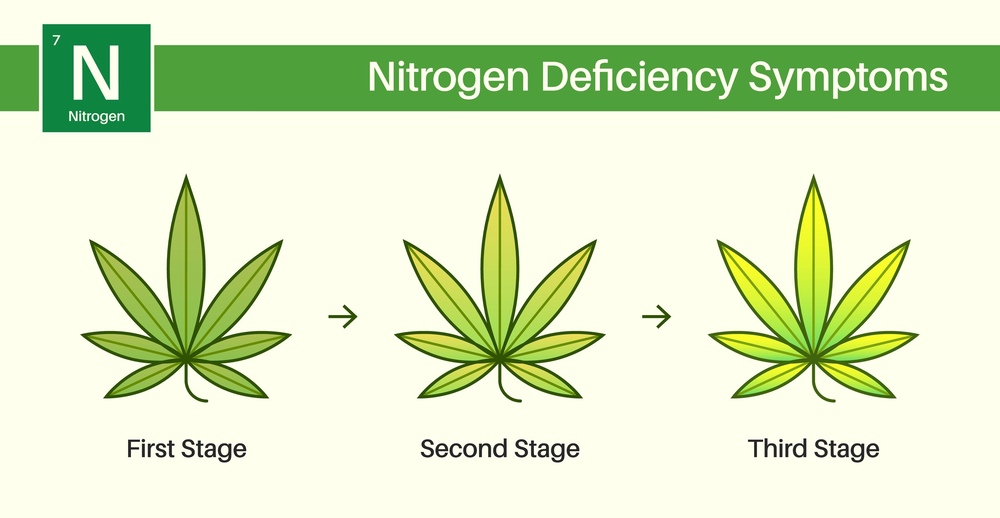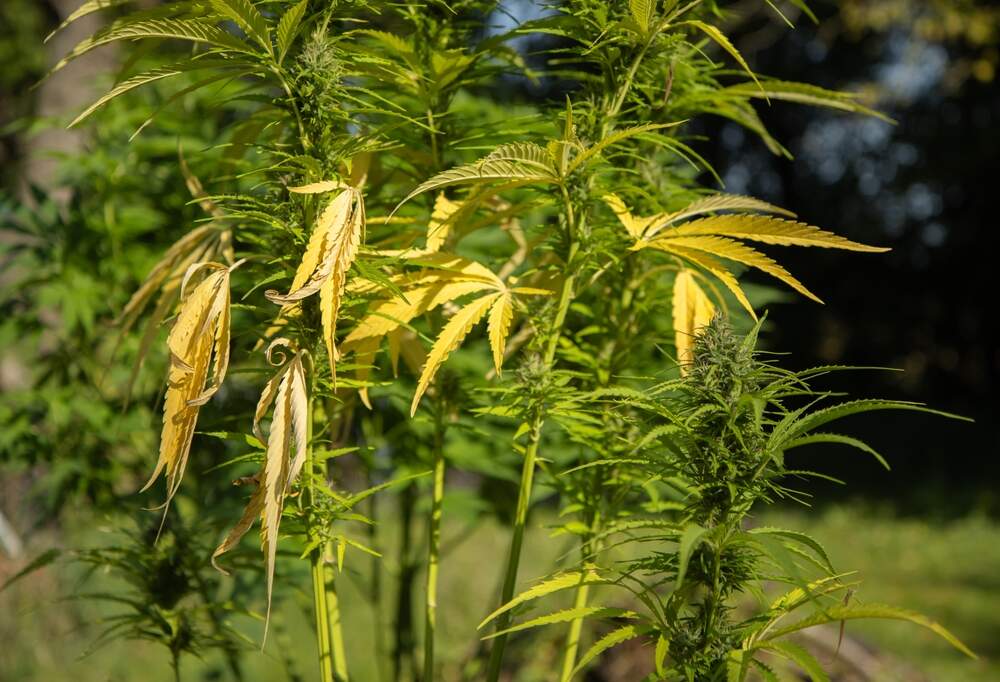
How to identify and fix nitrogen deficiency in cannabis
Nitrogen is the most essential of all the nutrients for weed plants, especially during the vegetative growth stage. Making one-third of the NPK ratio (nitrogen, phosphorus, and potassium) that you will see displayed on fertilizers, nitrogen is a mobile macronutrient that plants need from the very beginning of their life cycle all the way through to the flowering stage.
If you have landed here, then chances are that you suspect one (or more) of your plants of lacking nitrogen. Don’t worry – this is an extremely common issue, and one that all marijuana growers will face from time to time.
By the time you’ve reached the end of this article, you’ll be armed with all the knowledge you need to diagnose and fix a nitrogen deficiency weed crop and how to prevent it from happening next time.
Why do cannabis plants need nitrogen?
Nitrogen is one of the big three nutrients (also known as the macronutrients) that all plants need to grow. Even more so for weed plants – they need a higher amount of nitrogen than other plants because they have to produce a significant amount of chlorophyll; that gorgeous green pigment that allows plants to photosynthesis sunlight into energy is made up of nitrogen.
In simple terms, without enough nitrogen, your weed plant won’t be able to photosynthesis and grow properly, leading to stunted growth and sad harvests.
Nitrogen is also vital for:
- Amino acid production – the building blocks of proteins
- DNA synthesis – essential for growth and reproduction
- Enzyme production – required for numerous chemical reactions in the plant’s cells.
- Increases pest, disease, and climatic resistance.
What are the symptoms of nitrogen deficiency in cannabis plants?

Almost all nutrient issues that affect weed plants first show up in the fan leaves, and nitrogen deficiency is no different. If you see the following signs slowly developing, then the chances are high that your weed plants may be low on nitrogen:
Pale and yellowing leaves
The most common sign of a nitrogen deficiency is pale and yellowing leaves, starting at the bottom of the plant and gradually moving up. This is because nitrogen is a mobile nutrient, meaning that when it’s in short supply, the plant will prioritize sending it to newer growth where it is most needed.
This will begin with blotches of yellow appearing between the leaf veins, eventually turning the whole leaf yellow. In severe cases, the leaves may even turn completely white.
Stunted growth
Nitrogen is crucial for plant growth therefore a deficiency will result in stunted plants. This is especially noticeable in the vegetative stage, where your weed plants should be growing rapidly. If your plant’s growth seems to be stagnating, it could be a sign of low nitrogen levels.
Small and thin branches
Nitrogen is also essential for cell growth and division, which means it plays an important role in stem development. Without enough nitrogen, the developing branches may grow small, thin, and weak, making them more susceptible to breakage.
How to treat nitrogen deficiency in cannabis plants?
Check pH levels
If you suspect your plant or crop is suffering from any nutrient deficiency, the first step is to check the pH levels of your growing medium and water or nutrient solution. If your pH levels are off, it can quickly impede your plants’ ability to absorb nutrients, even if they are available in the soil or solution.
Plants grown in soil require a pH of 6.0 to 7.0, and hydroponically or coco-coir grown plants need a pH of 5.5 to 6.5 for optimal nutrient absorption.
- Take your pH pen and check that your water is at the proper pH level.
- If necessary, adjust the pH using a pH up or pH down solution.
- Once you have the water at the correct pH level, flush your plants with the adjusted water, ensuring the entire root zone is saturated and at least 25% of the water runs out of the container.
- Test the runoff water to confirm the pH level is correct. If the runoff is still too high or low, flush again.
- Flush twice day one, and then twice again day two.
Nitrogen-rich fertilizers
For soil growers, a quick fix for nitrogen deficiency is to add a nitrogen-rich fertilizer or amendment to your soil. This will provide an immediate boost of nitrogen to your plants, but it’s important to find the right balance and not over-fertilize.
Nitrogen-rich fertilizers include:
- Fish emulsion
- Blood meal
- Feather meal
- Alfalfa meal
- Composted manure
If you are growing hydroponically, you may need to change up the synthetic nutrient solution to one with a higher nitrogen content. It is likely that the one you have been using is fine – the problem is that you have not been using an EC or TDS meter.
It is imperative that you use one of these devices to check the nutrient level in your feed water every single time you feed.
Foliar spraying and top dressing
A quick way to boost your plants’ nitrogen levels is to foliar spray them with a diluted solution of water and fertilizer or compost tea. This will allow the leaves to absorb the nutrients directly, bypassing any potential issues with soil pH levels.
You can also top-dress your plants with compost or manure, which will slowly release nitrogen into the soil as it breaks down.
How to prevent cannabis nitrogen deficiency?

Prevention is the best defense, and if you spend a few minutes each day looking after your crop from the day that the seeds hit the soil, you’ll never run into problems with nutrient deficiencies. Here are a few tips to help prevent nitrogen deficiency in your weed plants:
- Use high-quality soil or growing medium: A good quality soil mix will provide a balance of nutrients for your plants, reducing the chances of any deficiencies.
- Select nutrient-rich amendments: When amending your soil, choose ingredients that are rich in nitrogen to ensure a steady supply for your plants.
- Regularly test pH levels: As mentioned earlier, keeping an eye on the pH levels of your growing medium and water is crucial for proper nutrient absorption.
- Monitor EC/TDS levels: Using an EC or TDS meter is 100% essential for all growers using coco-coir or a hydro setup.
- Check your plants every day: Just a quick once over is all that’s needed, checking that your plants are growing strong and developing new leaves. If you see any issues, address them immediately rather than letting things get out of hand.
How to improve your soil to contain nitrogen?
If you want to boost the nitrogen levels in your soil, it’s as easy as adding in some nitrogen-rich amendments or fertilizers. Some options include:
- Compost: Adding compost to your soil is a great way to increase the organic matter, which will provide a steady release of nitrogen over time.
- Manure: Manure is another excellent source of nitrogen, with chicken and horse manure being the most common.
- Coffee grounds: Coffee grounds are rich in nitrogen and can be added directly to the soil or used as a top dressing.
- Mulch: Using mulch around your plants can help retain moisture and add organic matter, which will break down and release nitrogen into the soil.
Remember that adding too much nitrogen to your soil can also have a negative effect, so try to keep things balanced.
Cannabis nitrogen deficiency FAQs
How long does it take to correct cannabis nitrogen deficiency?
If you catch it early, correcting nitrogen deficiency can take anywhere from a few days to a week. But, if the deficiency has been ongoing for a while, it may take up to two weeks or more to see significant improvement.
What is a good natural source of nitrogen?
Most good quality compost, manure, and organic fertilizers will provide a decent source of nitrogen for your plants. Fish emulsion, blood meal, feather meal, alfalfa meal, and composted manure are all excellent options.
